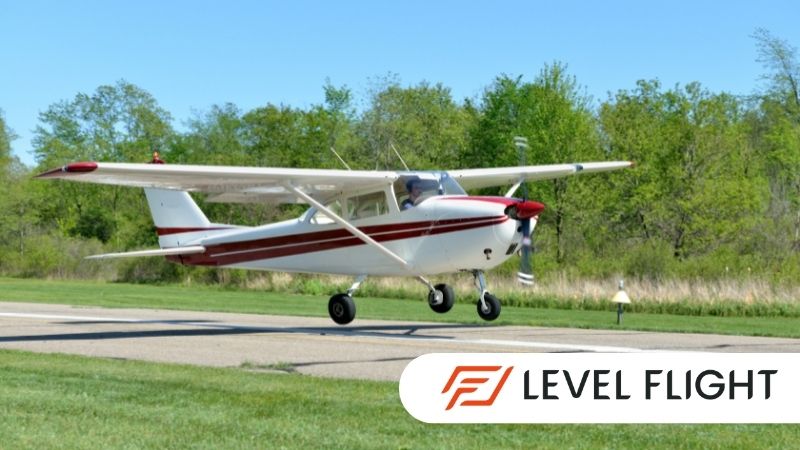
As a rookie pilot you work hard practicing your landings. Many pilots will tell you that landing is the most challenging part of flying. Many would also say it’s the most fun! Every student pilot wants to make that perfect “greaser” landing. We practice over and over again in the circuit to “put it on the numbers”, or “kiss the runway”. The unfortunate reality is that no matter how new or seasoned of a pilot you are there will always be bad landings that creep in. I humbly admit that after a firmer than usual landing I once had in the 737, an elderly lady getting off the plane said “what happened on that one? Did your hand slip?”. I still chuckle when I think of that story. There are many factors that affect your ability to nail the perfect landing and as a Student pilot, private pilot, or even a commercial pilot these three tips will definitely help you achieve your goals. Don’t forget that flight training is a lifelong endeavor, always striving toward perfect but never getting there.
What Is a Good Landing?
Flying can sometimes appear to be routine. You’ve landed at the same airport many times before. You are a student pilot who landed on this same runway hundreds of times in the last several months. Why then have you not been able to figure out how to make the perfect landing every time? The easy answer is external factors such as weather, ATC changes, or even the aircraft itself. Also ask yourself how you are defining a good landing? Many people think a soft landing is a good landing. This might be true but if you floated halfway down the runway to achieve that then it’s not a good landing. Conversely if you plant it firmly on the numbers or within the touchdown zone you’ve made a great landing! Whether or not you are actively flight training if you want to improve your landings follow these 3 tips.
Improve My Landing
1) Stabilized approach. I’m sure you have all heard people say that a good approach leads to a good landing. It’s true! In the airline world we strictly adhere to what is called Stabilized Approach Criteria. This is a set of guidelines that must be met in order to continue the approach to landing. In many cases this criteria must be met by 500 to 1000 feet above the airport elevation depending on the operators procedures. The criteria to be met typically include:
- Speed target +10kts trending toward target. Or on target if using 500 feet as your reference.
- On Slope (3 degrees) or roughly 500 fmp descent rate.
- Vertical speed less than 1000 feet per minute.
- Flaps Set
- Landing Gear down
- Instrument landing systems within established tolerances.
I know what you are thinking… I’m not an airline pilot, how does this apply to me? Easy! By establishing your own stabilized approach criteria you can easily set yourself up for success by ensuring you have met your criteria before the desired point (we recommend 500 feet for a small aircraft). If you are outside of the tolerance on any of the criteria you go around. This makes that decision of a go/no go easy by using a consistent and familiar set of rules. I can’t tell you what works best for the airplane you are flying but referencing the above criteria you can establish your own set of criteria.
2) Seat Height. I like to use the term seat carma. Some days you feel like you are sitting in the sweet spot, other days you just can’t find the right position. If you are flying different aircraft every time you fly then this one is really going to be crucial to you. Focus on establishing a reference to the perfect seat height. Maybe it’s a fist on the dash, or a point on the cowling or nose. Why is this important? If you are sitting too low you won’t have good visibility over the dash to see the runway as you approach and enter the flare. If you are sitting too high you can often feel that you are higher than you actually are and misjudge the time to flare. Of course if you are flying your own airplane and don’t have to constantly adjust the seat height you already have a leg up. Maybe an excuse to purchase your own airplane?
3) Look at the end of the runway. Think about when you drive. Do you look at the nose of your car or do you look far down the road? This is something that your flight instructor has probably harped on already but it can be easy to creep away from adhering to over time especially as a student pilot who is focusing on so many things at once. By looking downfield as you round out into the flare the landscape moves much slower and allows you to see what you need to see. If you are looking just off the nose of the aircraft at the runway numbers and continue to look there as you round out into the flare, what you see is going to be moving very quickly and it will be hard to judge the correct flare. As you progress and fly faster aircraft this becomes even more important.
Every Landing is Different
Remember, with the multitude of factors affecting each and every landing you are bound to have some bad ones from time to time. Don’t worry, take a minute to evaluate areas where you could improve and carry on. I think most of the time us pilots are our own worst critic. Don’t forget the old saying, “a good landing is one you can walk away from. A great landing is one where you can reuse the airplane”. Now I know we pilots can strive for better than that but it certainly does hold a grain of truth to it. Adjust your seat, look down the runway, and fly a stabilized approach and you will see a marked improvement. Enjoy the fact that every landing is different and presents its own challenges. Imagine how boring flying would be if landing was easy.
There are many reasons why you should choose to go around. As mentioned, if you establish your own stabilized approach criteria it will give you a set of guidelines on making that decision. Other reasons to go around would include windshear, unsafe runway, too high, or too low on the approach. If you don’t feel ready to land, even if you aren’t sure why then pull up and go around.
On the approach you should be primarily looking outside with quick references inside at your airspeed. In the flare you should be 100% looking outside.
This is a variable answer. It really depends on what kind of aircraft you are flying, the approach speed and conditions. The key is to approach with a constant, stable speed, so that you can enter the flare smoothly and in control. The goal of the flare is to arrest the descent and bleed the speed to essentially touch down as the wings stop flying. If you need to hold the flare too long then you have approached too fast. If you transition from the approach to flare and touch down within a few seconds you are flaring too late or too slow.
Take Flight Now
Level Flight is Canada’s best online ground school. It is our mandate to provide higher quality, more engaging training for Canadian Student Pilots. If you are seeking the exhilarating freedom of flight for a hobby or with aspirations of a career in the skies, Level Flight offers the best ground school experience available. Sign up for our online learning platform now and discover the adventure that awaits you at Level Flight.
By submitting this form, you opt-in and give expressed consent to receiving SMS / text messages, calls, and emails from us for the purposes of communication related to your inquiry or related to the products and or services we provide.
